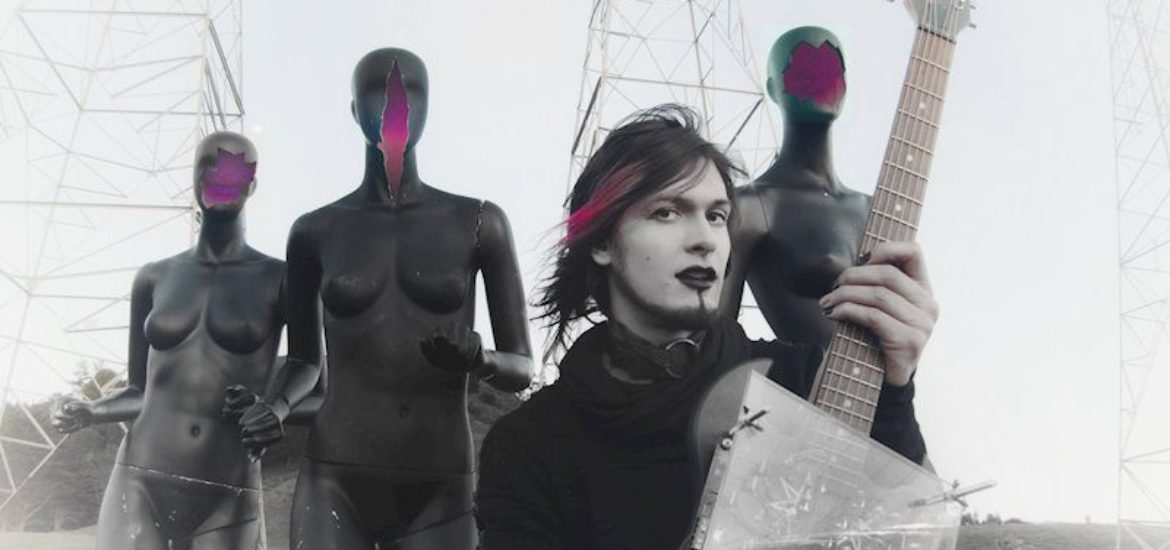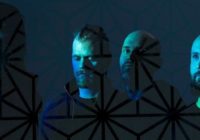Over the years there have been musicians with extraordinary tales of learning or relearning to play music after major accidents, health issues and physical challenges. Rick Allen became the world’s first one-arm drummer, while guitar virtuoso Jason Becker continues to make music and communicate through eye movement after full body paralysis from Lou Gerighs disease.
Diagnosed with Lyme disease in 2018, San Francisco based black metal musician Satyra could be placed in that elite group dealing with the physical, mental struggles and limits brought on by the condition. Before diagnosis they still had hopes of being a musician the tradition way. Though their condition, as debilitating as it is, was the beginning of an extraordinary story still being told.
Severe nerve pain, fatigue and a variety of other symptoms took away their physical ability to play guitar. What could have been a crippling, dream ending blow, turned into a new light and vision giving rebirth to renewed passion, new music and a genuinely unique, outside the box way of playing music through electronics.
A few years back the musician came across research showing how music could be played using robots. This epiphany was the spark to designing their own home-made bots playing the music Satyra composes. Their mechanical creations play guitar and drums while the hand-costumed mannequins are their spiritual ambassadors shedding colored lights with the music.
Far from a gimmick, the bots and mannequins are essential to what Satyra does. The bots play melodies and strings at inhuman speeds, while Satyra plays a unique handmade bass creation and sings on specific songs capturing the struggles and pain of chronic illness, fatigue, depression and all the unknown, unanswered questions brought on by constant pain , therapy’s and the future.
Through trial and error Satyra began making progress becoming an active musician again. “I tried for a long time and only succeeded in the past couple years. I have this dream of making music so I can make an album in my lifetime. I want to at least make that happen.” Satyra’s not letting physical limitations prevent them from achieving long term, loud goals. “I’m gonna stop screwing around and make it happen.” Six to seven years were spent low key then in the past three, they locked down committing to progress. “I was like, I’m really gonna try and make something. One day, no… now, let’s do it!”
Satyra enjoys the feel of black metal, “I really love the texture and sound of metal. It feel’s very cold and emotive at the same time. This doesn’t have to be strictly a black metal project but black metal always kind of spoke to me.” When Satyra made music, that’s always what came out.
Their attraction was always to the Darkthrone side of black metal. “I’ve always enjoyed bands on the more experimental side of things.” Liturgy and Portal were major inspirations, “They really inspired me over time, also the Enslaved side of things. They’ve always been a band that jumped out to me. I’ve also seen Behemoth more times than I can count. I love their style.”
Portal is fuckin’ awesome, they confess, “I was so lucky to see them live a couple years ago. If I wasn’t sold on them before, I was after. It’s a really weird look and it fits.”
Lyme disease has been Satyra’s curse and in weird ways a blessing, “I’m striving very hard and doing everything I can to get a handle and overcome it.” After diagnosis they understood the realities of the condition, as it took over more of their life. “The things it’s taught me and the things it’s given me, in a funny way I almost feel like I wouldn’t be where I am musically without it.”
Satyra started with the traditional approach to playing guitar but results were self-admittedly mediocre. “It’ll be years before I can play anything I want to compose. I like fucking chaotic music. I felt pretty lost. I’m still gonna make music but I’m gonna stop being a perfectionist about it.” Given their limited window of body/muscle movement Satyra doesn’t have the luxury of tweaking a riff to perfection. “Like no, get it out and work on your second riff already.” Given the extended length of pain, certain activities can put them in any productivity is a positive accomplishment. “If I make anything, that’s awesome.” Since fatigue hits fast, writing the riff the best they can, the first time and moving on is the goal. “My health was really manifesting in my hand use, can’t use a mouse very often at all.”
Seeing the work of YouTube robotics enthusiast Simone “The Queen of Crappy Robots” Geirtz gave Satyra the idea of creating their music through home-made customized electronics. “I was like, oh my gosh, I can make robots when I saw that. The vision clicked. I can build things to make music, besides myself.” It went from a nebulous of just wanting to make music, to a vision, an execution and a way of expressing themselves, with a more authentic feel playing metal with metal.
It took a long time to build the robots, besides the daily anatomical pain, they had their own version of trial and error with hardware wars, making the bots do what they wanted. “The first big infestation significantly limited my hand use. I knew how to design electronics but had trouble building.” Friends helped construct the bots under Satyra’s instruction clicking things into place as they slowly started to see the dream became reality. “I want to do this musically as much as I want to not have Lyme disease anymore!”
They knew something was wrong when it became extremely challenging to type on a computer. Satyra couldn’t use a keyboard or mouse for more than five minutes without excruciating pain that would last a couple days. The first thought was carpel tunnel, going for treatment without improvement. Tingling and numbness in the feet was next. “Since then it’s really manifested in all sorts of ways. They call Lyme disease the great imitator. It affects my memory, makes me forget things.”
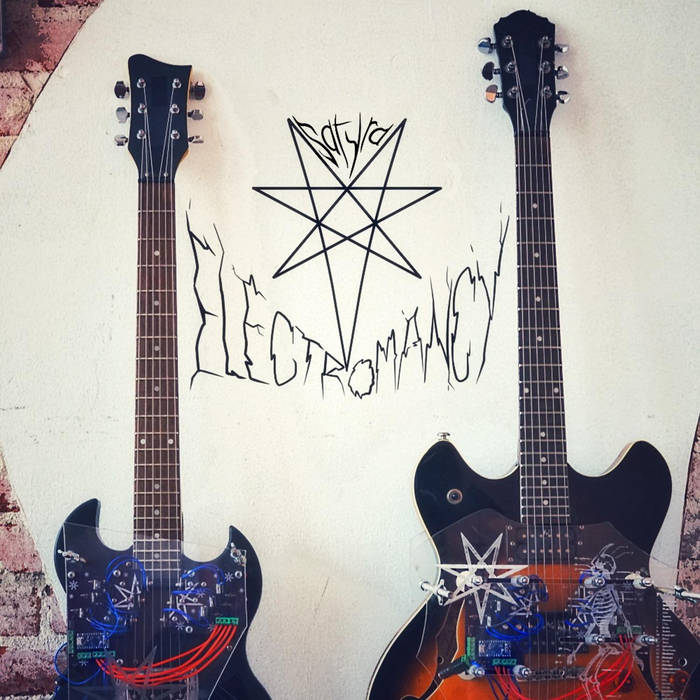 The great imitator’s manifestations will change. “It imitates other things, which is why I thought I had carpel tunnel for awhile and still have hand limitations. It also manifests in extreme waves of fatigue. I can’t go on a walk for more than a couple miles before I’m wiped for the day with nerve pain all over my body. I haven’t had a warm shower in two years because it flares up my nerve pain and am in excruciating pain for several days after. It sucks. A cold shower sucks, especially in the winter. I’m glad we’re getting to the warmer months. A cold shower in the winter means, I’m just stinky all winter.”
The great imitator’s manifestations will change. “It imitates other things, which is why I thought I had carpel tunnel for awhile and still have hand limitations. It also manifests in extreme waves of fatigue. I can’t go on a walk for more than a couple miles before I’m wiped for the day with nerve pain all over my body. I haven’t had a warm shower in two years because it flares up my nerve pain and am in excruciating pain for several days after. It sucks. A cold shower sucks, especially in the winter. I’m glad we’re getting to the warmer months. A cold shower in the winter means, I’m just stinky all winter.”
Along with weird memory and brain fog it also manifests in weird gut symptoms, nervous system issues, and anxiety. “Depression’s really common because it’s literary an infection in your nervous system. I’m on eight cups of coffee right now and super anxious in what’s going on and there’s an infection in my nervous system that regulates that.”
Satyra found fire dancing as an effective body therapy for muscle movement and stress, “Fire dancing is something I’ve done for probably seven or eight years. When all this started I was really sad because it would suck so much to lose that. It’s such a cool, level, grounding tool, at first I couldn’t do it at all the first couple months. Then, I learned how to work with my body a little more. I can only do it for like, 20 minutes at a time. Historically I’d go out and do it for a couple hours cause, it was fun. I’m so happy and grateful that that’s something I can still do. It’s so fun and grounding. A little makes my body feel better, and it’s metal as fuck!”
They’re on several different therapies and medications with frequent change. Satyra says dealing with Lyme disease is a bit like black magic, nobody really knows what to do after being diagnosed. They’ve had long calls with 20-30 people who’ve had it, some managing to overcome it, while others have battled it for years. Talking to them, hearing their stories and what can be learned has helped greatly. “Everyone’s healing journey is totally different. It’s not like, you do this thing and get healed or that thing. Western medicine says, take antibiotics. You’ll be fine. That only works if you’ve recently contracted it. Once your hand doesn’t work, you’ve had it for a long time.”
IV therapy was helpful. “I did some weird blood draw things where they take it out, mixed it with things and shoot it back in your body.” Satyra’s tried all manner of supplements and antibiotics even alternative methods like acupuncture. “I’ve started working with different spiritual practices to try and help calm my nerves. Meditation is good to calm your nervous system and how you think. While I don’t think I can meditate my health problems away I do think I can meditate to mitigate some of the symptoms, which is huge.”
Satyra has a background in electrical engineering and physics as an undergrad. While it didn’t teach how to “build the band” it gave building blocks of knowledge. “It taught me enough to learn how to do electronics. After college before now I had the chance to work with a cool hacker publication called Hackaday.com. I do a lot with community development with DIY hackers. “It was really thorough.” Satyra entered that world via DIY robots, gaining knowledge to make the creations better, giving them a good backbone.
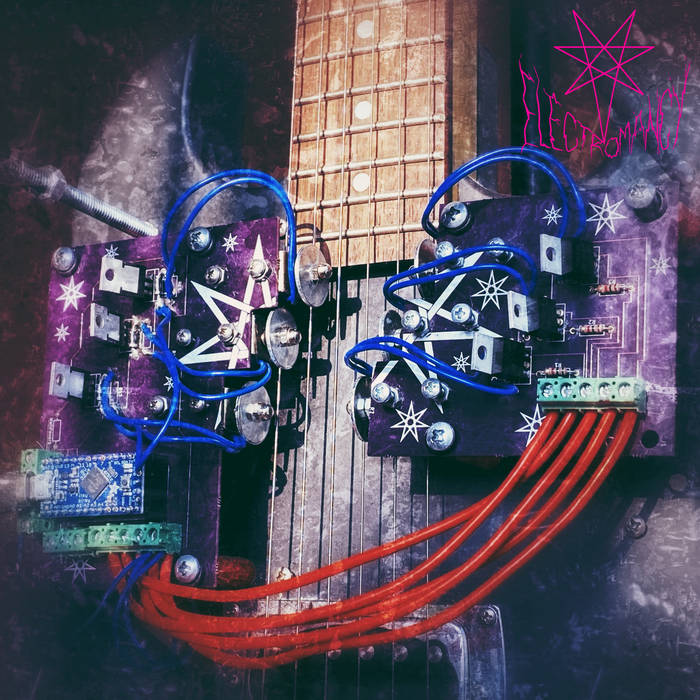 Several great how-to connections were made, when questions arose about how this motor works or how this part does this. They were able to talk to people with expertise, slowly building the bots that make the sounds we hear.
Several great how-to connections were made, when questions arose about how this motor works or how this part does this. They were able to talk to people with expertise, slowly building the bots that make the sounds we hear.
The experience reminded Satyra of the creator of Dilbert. “Being great at something isn’t about being great, it’s about combining the little ways you’re OK at things into something new that makes something awesome. I’m mildly funny and a pretty shitty artist but when you put that together I make a great comic series.”
Satyra say’s they’re a pretty ok, not very good roboticist and mediocre musician but when you put them together it forms a really, really cool band.
Spiritually the robot’s play the music, “All my robots, the actual robotics portion are built onto and into the instrumentation. My robot guitars could play by themselves. I just put it there, plug it in and it plays, or pick it up, walk around with it, leave it there.” Satyra’s done demos, songs and video material where they’ve hit play on the guitar, gone in the other room for a snack, come back and it’s recorded.
The guitars do it themselves while each mannequin has its own instrument it’s spiritually linked to. “I carved out the faces filling them with LED’s and each lights up, based on the instrument it’s aligned to.” The mannequin’s don’t move or play. The guitars moving and playing itself while the mannequin’s there but its lightshow is telling you the guitar data. All the mannequin’s faces are giving a different visual light show according to connected instrument. “That also works with the surrealist aesthetic I’m going for and going to explore further.”
The presentations very inspired by Portal. “None of the instruments are gonna be touching any of the mannequins.” They liken it to if Salvador Dali drew a band. “If a person was playing, they’d be standing there but the guitar would be floating in front of them. Dali surrealism is how I’d imagine the stage presence to be.”
The mannequins are hollow inside. Satyra carved the different rips and tears in their faces filling them with light. “They’re literary shining and glowing from the inside.”
Making them move would be even creepier, “We’re doing what we can. We’ve got a quarter of a band to work with. I’m a fan of simple engineering so there are a zillion things I could do. It’d be awesome if they had jetpacks and flew around onstage shooting lasers out of their faces. Maybe one day they will and I’m not writing that off. I got dreams. I’m happy with what I’ve made so far.”
A lot of the compositions aren’t capable of being played by human hands. The upcoming Robot Black Metal EP opens with the super challenging “The Spark” filled with chaotic synchronization. “Maybe a really incredible, talented guitarist could pull off that part. It would be a fuckin’ nightmare and would probably sound shitty. The song also has some phasing, where different strings are playing different rhythms at different time signatures. Its simple melodies but since they’re played at different time signatures they keep evolving in sound. It’d be mind-bogglingly challenging or impossible for a normal guitarist but easy for robots.”
The process gives off a dirty, gritty, mechanic vibe sounding chaotic and somewhat wrong. Satyra likes the analogue sound it projects. “A lot of industrial stuff sounds gritty but also so clean because it’s digitized. I love the raw chaoticness of actual instrumentation and texture because its analogue but also that weirdly mechanical precession on it because they’re robots.”
The second track is a cover of Darkthrone’s “Transilvanian Hunger” while the cover art comically spoofs the Darkthrone cover, with Satyra yelling in corpse paint, the candle bra replaced by a light bulb playing up the electrical atmosphere. “I’ve showed it to some people and they’ve gotten confused. Other friend’s immediately got it saying it was the funniest shit ever.”
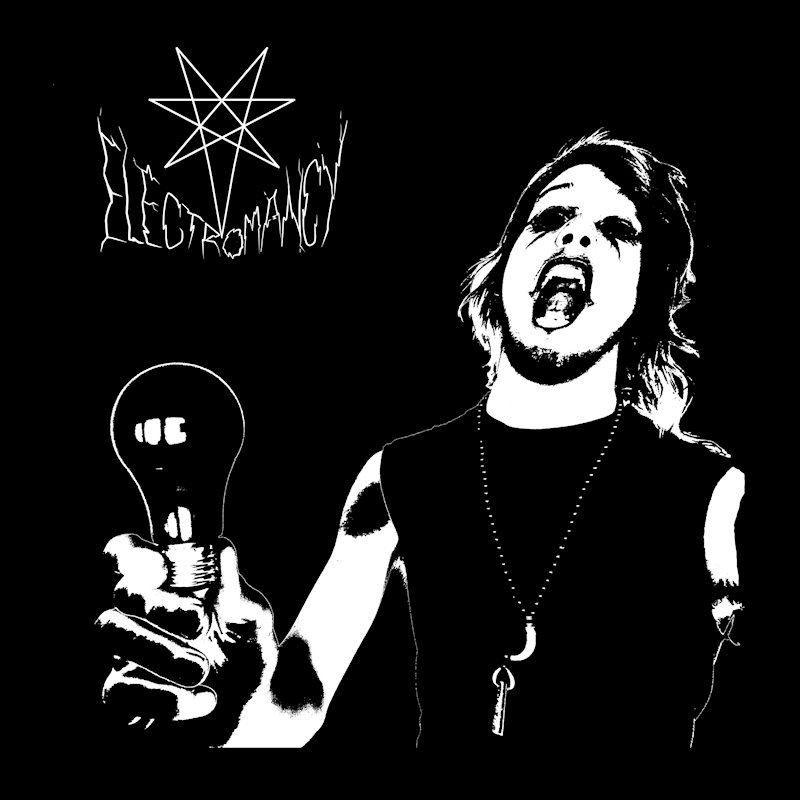 The cover tune was recorded months ago as Satyra was getting an understanding of how the guitars worked. “It’s not a hard piece, which is good. I’m like, ok, how do I work this machinery. It was a perfect intro piece to work on. People in black metal know it. I love the piece.”
The cover tune was recorded months ago as Satyra was getting an understanding of how the guitars worked. “It’s not a hard piece, which is good. I’m like, ok, how do I work this machinery. It was a perfect intro piece to work on. People in black metal know it. I love the piece.”
For laughs, they put it on social media in a side by side comparison. “There’s so much silliness to it.” There’s humor in black metal. “I love that element. Even in my music, it’s very dark, heavy, cold and serious but at the same time you have to laugh and have fun with it. I’m doing this because it makes me happy. I should smile about it here and there.”
An earlier recorded track “Piano Phase on Two Robot Guitars” is a piece with two guitars playing the exact simple melody but one is playing just barely faster over a 12 minute period going out of phase, one note apart, then two, until they synch again. “Imagine getting two guitarists to play that piece side by side. You play just a little faster so that in 12 minutes you’re playing the same thing again.”
The song was originally composed by Steve Reich, a minimalist composer in the ‘60s. “I did change the notes to be more metal and the timing of the song. The original was 22 minutes and made mine 12.” They also cut it into 12 separate tracks so you can hear the phase in every note. It’s not a straight comparison but a direct homage to Reich’s work.
Satyra does a lot of LGBTQ activism in their free time, being a proponent of feeling comfortable in your own skin, letting people do their own thing and being happy. “If I can say something a little different, maybe people will like it.” Electromancy not only shows the desire and passion of the human spirit overcoming huge physical obstacles to make music but can inspire the community to fight through individual and collective issues.
Satyra and Electromancy are separate entities with Satyra on select vocals. “My passion is the robots, composition and all the music around it.” Now and then they plan on releasing stuff under Satyra but will be more experimental material not fitting with Electromancy.
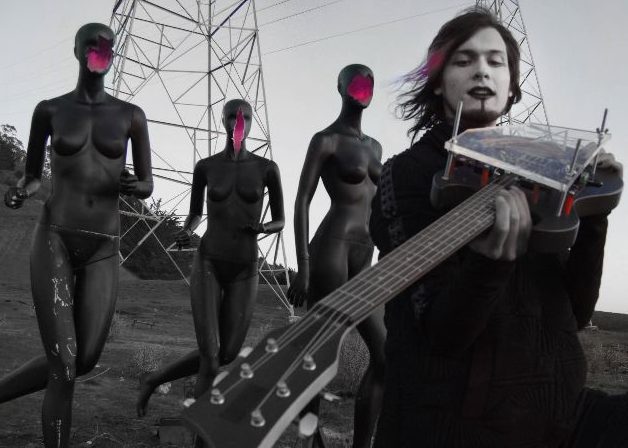 The EP comes in April and a full length is mixed, mastered and ready. A video for “Transilvanian Hunger” is out showing the robots at work giving a better glimpse of the process while building momentum and showing off what they’ve created. A little hype and community attention’s never a bad thing. The upcoming full length will have a slightly more creative title than the Robot Black Metal EP, though it tells exactly what you’re getting.
The EP comes in April and a full length is mixed, mastered and ready. A video for “Transilvanian Hunger” is out showing the robots at work giving a better glimpse of the process while building momentum and showing off what they’ve created. A little hype and community attention’s never a bad thing. The upcoming full length will have a slightly more creative title than the Robot Black Metal EP, though it tells exactly what you’re getting.
Eventually, live shows will happen with Satyra on stage in different capacities doing vocals, pedal work for guitars and bass using a variation of a drone horn carved from a PVC pipe, specially featured on “The Spark.”
Though the bands core will stay robotic, they welcome guest musicians and vocalists. Playing other instruments is a possibility if full hand use ever returns but for now the robots are the main focus. “No human can do the things I can with these robots. The way that’s opened what I can do compositionally has been so much fun.”
They love the expanding diversity of what metal is becoming. “Metal has traditionally been straight white guys playing guitar and now it’s changed to almost everyone. I’ve found the metal community to be really accepting. Rob Halford is such an inspiration for a lot of us. We’ve been here all along, though we’ve had to be quiet.”
Liturgy, The Body and Portal are acts they’d love to tour with. “I wanna go on stage with Portal our weird vibes would complement each other. I’d love to tour with Enslaved that would be a dream come true.”
Satyra’s found balance in extreme’s, “At this stage, I’m really introducing myself. What we are is interesting.” The future will tell how ground breaking the project will be and what doors will open. They could be making pioneering moves with each release and inventing new possibilities for others with disabilities to continue their passions. “I’m Satyra and I created Electromancy.”
https://www.facebook.com/RobotMetalBand
https://electromancy.bandcamp.com/
https://www.patreon.com/robotmetalband
https://twitter.com/RobotMetalBand

